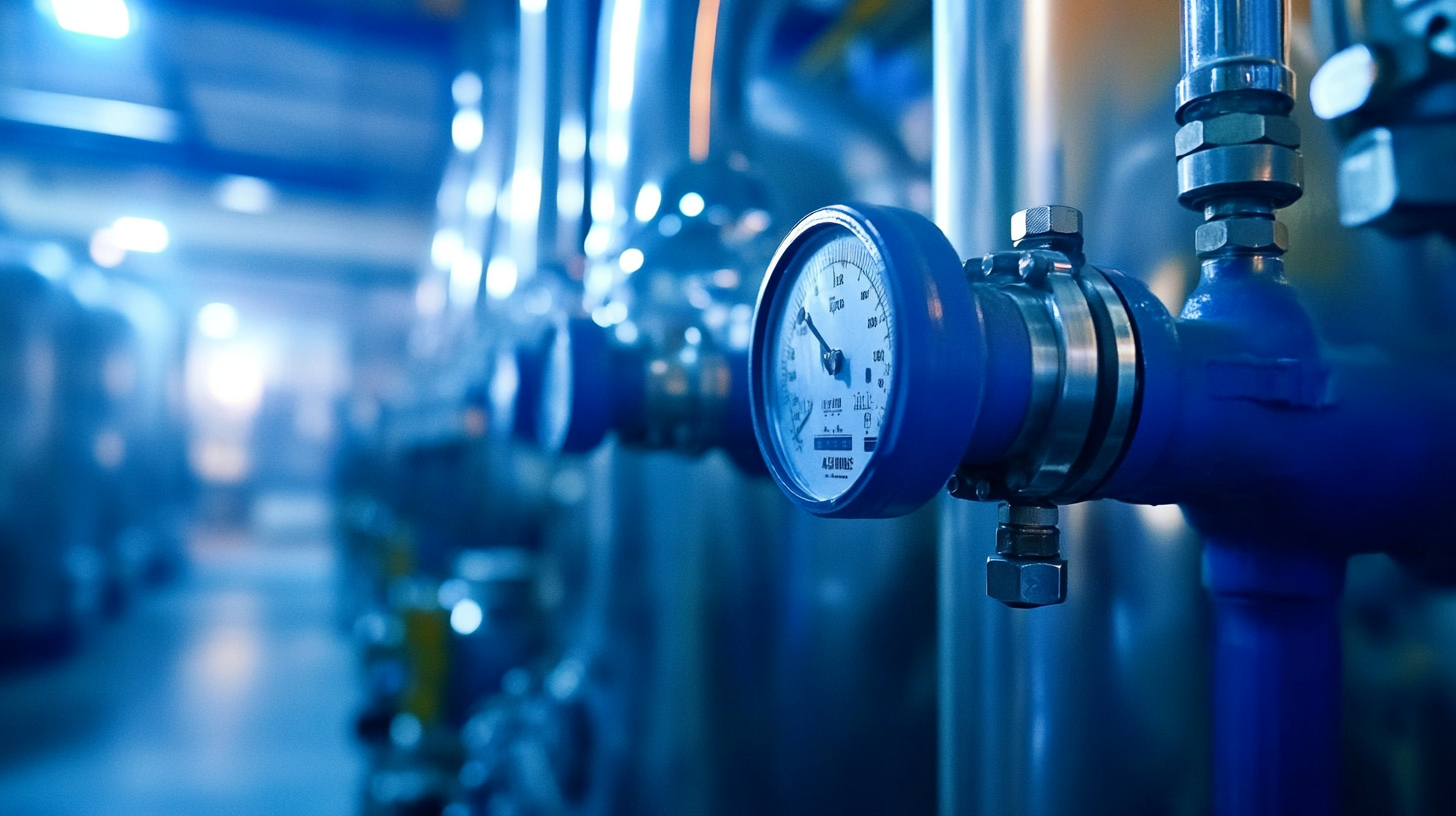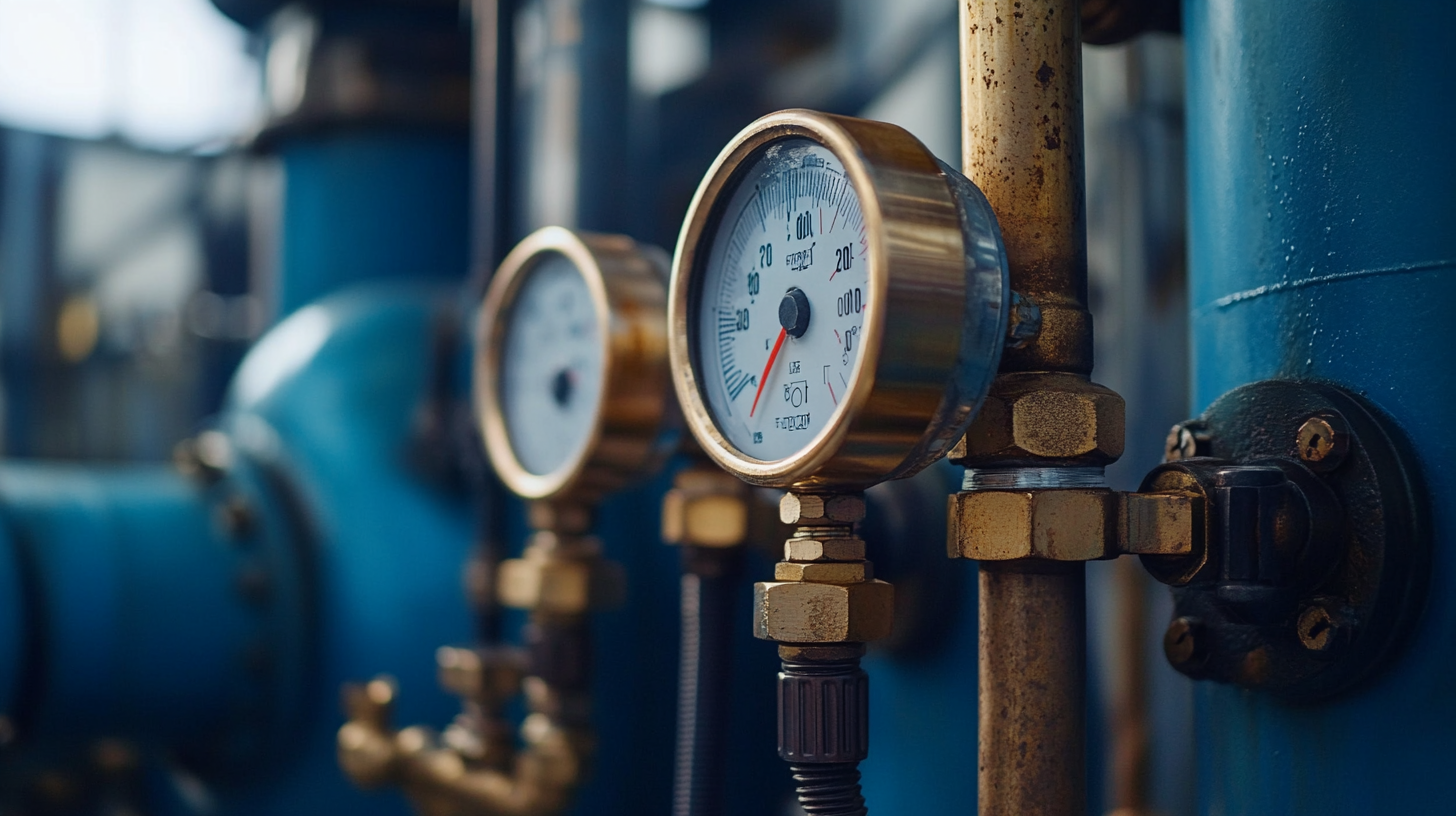
- sales@bjbod.com
- Mon - Sat at 7:00AM to 9:00PM

In the realm of industrial operations, the significance of maintaining the optimal Compressed Air Dew Point cannot be overstated. According to the Compressed Air and Gas Institute (CAGI), approximately 70% of manufacturing issues arise from inadequate air quality, with moisture being a primary culprit. The Dew Point, measured in degrees Fahrenheit, indicates the temperature at which water vapor condenses into liquid, and controlling this aspect is crucial for preventing corrosion, equipment failure, and reduced efficiency. A study by the International Society for Automation (ISA) reveals that every 1% increase in moisture content in compressed air can lead to a 5% decline in productivity, underscoring the pressing need for industries to invest in systems that maintain an optimal Compressed Air Dew Point. In this blog, we will explore five reasons why achieving the best Compressed Air Dew Point is essential for enhancing operational efficiency and prolonging the lifespan of industrial equipment.

In industrial applications, maintaining the right dew point in compressed air systems is vital for ensuring efficiency and productivity. The dew point is the temperature at which moisture begins to condense, and when this level is too high, it can lead to several issues. The presence of moisture can cause corrosion in pipes and machinery, ultimately leading to costly downtime and maintenance. Understanding and controlling the dew point help facilities avoid these expensive disruptions and extend the lifespan of equipment.
Moreover, the quality of the end products can be significantly impacted by the dew point of compressed air. In industries like pharmaceuticals and food processing, where purity is paramount, even the slightest amount of moisture can compromise product integrity. By optimizing the dew point, companies can ensure that their compressed air systems deliver the dry, clean air necessary for these sensitive processes. As a result, organizations can maintain stringent quality standards, enhance operational efficiency, and minimize waste, all of which contribute to greater overall profitability.
Moisture levels in compressed air systems play a vital role in determining industrial efficiency. When moisture content is too high, it can lead to a myriad of issues, including corrosion and equipment damage, which in turn increases maintenance costs and downtime. Furthermore, tools and machinery operating in a high-humidity environment may suffer from reduced performance and lifespan, resulting in unplanned outages and decreased productivity. Understanding these implications is crucial for manufacturers seeking to maintain optimal operations.

Achieving the best compressed air dew point is essential for mitigating these issues. By ensuring that moisture levels are controlled, businesses can improve the quality of their compressed air, leading to enhanced process reliability and efficiency. Additionally, maintaining an optimal dew point supports energy conservation efforts, as dry air requires less energy to compress. This not only lowers operational costs but also contributes to a more sustainable industrial practice. Investing in proper moisture management systems can, therefore, have a significant impact on the overall operational effectiveness and profitability of an industrial facility.
Maintaining an optimal dew point in compressed air systems is essential for maximizing equipment longevity and minimizing maintenance costs. A low dew point can lead to the condensation of moisture within the air lines, which creates a breeding ground for corrosion, rust, and detrimental microbial growth. When moisture accumulates in pneumatic tools and machinery, it compromises their functionality and can lead to premature wear and tear. This not only shortens the lifespan of vital components but may also lead to unexpected breakdowns, resulting in costly repairs and downtime.
Moreover, the effects of low dew point extend beyond just equipment degradation. Condensed water in compressed air can contaminate end products, especially in industries like food and pharmaceuticals, where purity is paramount. This contamination could lead to significant losses, including diminished product quality and possible regulatory penalties. Thus, ensuring an optimal dew point contributes not only to the efficiency of industrial operations but also safeguards product integrity and compliance with industry standards. Investing in proper filtration and drying systems to maintain the appropriate dew point is critical for sustaining both the performance of machinery and the overall success of industrial processes.
The chart above illustrates how different dew point levels affect the average lifespan of industrial equipment. As the dew point decreases, the longevity of the equipment declines, emphasizing the necessity of maintaining an optimal dew point for successful industrial operations.
Monitoring and managing the compressed air dew point is essential for maintaining peak performance in industrial operations. A recent report highlights that compressed air is the second-largest utility in most manufacturing settings, particularly in textile factories, where it often accounts for a significant portion of operational costs. Mismanagement of compressed air can lead to inefficiencies resulting in losses of up to 30%, which emphasizes the need for precise dew point control. Proper dew point monitoring can prevent moisture-related issues that can cause costly equipment failures and reduce overall productivity.
Implementing intelligent compressed air management solutions can greatly enhance operational efficiency. By continuously monitoring dew point levels, industries can ensure that their compressed air systems operate within optimal parameters. Current industry guidelines suggest that keeping the dew point at or below -40°F (-40°C) is crucial to preventing condensation in pneumatic systems, which can otherwise lead to mechanical failures and increased maintenance costs. Furthermore, aligning humidity levels according to ASHRAE recommendations not only aids in effective temperature control but also fosters a stable environment, essential for sensitive applications like data centers. Thus, a proactive approach to dew point management effectively safeguards both equipment integrity and operational resilience.
| Reason | Impact | Recommended Action |
|---|---|---|
| Prevents Corrosion | Inhibits rust and extends equipment lifespan | Regularly monitor and maintain dew point levels |
| Improves Product Quality | Ensures clean and dry compressed air | Implement filters and dryers as needed |
| Enhances Energy Efficiency | Reduces energy costs associated with drying processes | Optimize system design and equipment selection |
| Mitigates Product Contamination | Prevents moisture-related issues in production | Install moisture traps and monitor regularly |
| Supports Regulatory Compliance | Ensures adherence to industry standards | Conduct routine audits and training |
 Maintaining an optimal dew point in compressed air systems is vital for product quality and safety in industrial operations. The dew point indicates the temperature at which moisture begins to condense in the air. When the dew point is too high, condensation can occur, leading to water contamination in products. This contamination can compromise the integrity and safety of finished products, especially in industries such as pharmaceuticals and food processing, where moisture control is critical.
Maintaining an optimal dew point in compressed air systems is vital for product quality and safety in industrial operations. The dew point indicates the temperature at which moisture begins to condense in the air. When the dew point is too high, condensation can occur, leading to water contamination in products. This contamination can compromise the integrity and safety of finished products, especially in industries such as pharmaceuticals and food processing, where moisture control is critical.
In addition to safeguarding product quality, optimizing the dew point can significantly enhance equipment efficiency and longevity. Excess moisture in the air can corrode pipes, valves, and other components of air systems, resulting in costly repairs and downtime. By ensuring that the compressed air dew point is managed effectively, companies can improve operational reliability, reduce maintenance costs, and ultimately foster a safer working environment. This proactive approach not only meets regulatory standards but also builds trust with customers who prioritize quality and safety in their products.